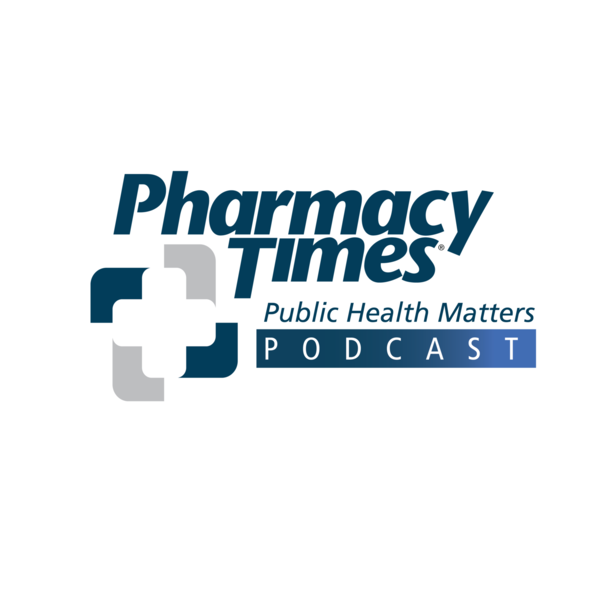Publication
Article
Specialty Pharmacy Times
Keeping an Eye on Hepatitis C Virus Drug Approvals
Author(s):
With the recent approval of new hepatitis C treatments, payers are increasingly concerned with controlling costs in this category through policies that may affect treatment decisions.
With the recent approval of new hepatitis C treatments, payers are increasingly concerned with controlling costs in this category through policies that may affect treatment decisions.
Given the recent evolution of hepatitis C virus (HCV) treatment, starting with the 2011 introduction of Incivek and Victrelis and continuing with the late 2013 approval of Olysio and Sovaldi, it’s no surprise that payers now consider the HCV category nearly as important a management priority as cancer, rheumatoid arthritis (RA), or multiple sclerosis (MS) (Online Table 1). These are all high-spend disease states, and have become more so recently. They are all recipients of recent approvals with novel mechanisms of action, oral routes of administration, and improved clinical outcomes. In each category, payers have more to think about with greater financial consequences riding on each treatment decision.
But just because payers prioritize the management of therapeutic categories for similar reasons doesn’t mean they’ll end up managing them similarly. Access restrictions in cancer look nothing like those in RA. Patients with HIV do not face the same hurdles as patients with MS. Utilization management is not a unilateral pursuit. It’s an ongoing negotiation among payers, doctors, specialty pharmacies, and manufacturers that takes place within limits set by the FDA label and best clinical practices.
As researchers at Zitter, we wanted to find out how these parties would react to the expected steady, almost rhythmic approval of hepatitis C agents expected between 2014 and 2018. In January of this year, we began by surveying 100 payer representatives about their attitudes and management expectations for the category. We also surveyed 150 specialist physicians and 50 primary care doctors to gather their attitudes and reactions to the new entrants and payer decisions. Finally, we conducted interviews with a handful of practice managers at infectious disease and gastroenterology practices to get the story behind how payer policies impact treatment decisions and day-to-day operations.
To start, we were surprised at the speed with which payers developed their formal, final policies for Olysio and Sovaldi, approved within 2 weeks of each other between November and December of 2013. By the end of January 2014, 36% of plans already had written policies. By the end of July 2014, another 32% expected to be finished (Online Table 2). Surprisingly, the rate of policy adoption has been even faster. Our analysis of prior authorization (PA) policies from commercial plans covering 190 million lives shows 75% of plans developed Sovaldi policies within 6 months of launch and 80% created documents for Olysio. In contrast, at 6 months after launch only 48% had policies in place for Xeljanz. Payers were likely in a hurry because they expected patients who deferred treatment to arrive, en masse, at the beginning of the 2014 plan year. Recently, UnitedHealth Group announced it spent “multiple” times what it had expected in Q1 to cover Sovaldi.
Table 2: New Drug Review Timing: Sovaldi
Some portion of that spend is attributable to the combination use of Sovaldi with Olysio. Taken together, the drugs obviate the need for treatment with interferon. However, neither is FDA approved for use with the other (although Janssen, the manufacturer of Olysio, recently applied). Early analysis of PA policies and a survey of payers without extant policies at the time revealed a focus on preventing this particular off-label use. Forty-four percent of payers (representing 35% of covered lives) explicitly forbade combination use of Olysio and Sovaldi (Table 3). Among payers that had not yet written a formal policy, fully three-fourths thought there was no likelihood at all or that it was more unlikely than likely that their organization would cover the 2 together (Table 4). In the end, this is not how coverage played out at all.
{Click image to enlarge}
On January 29, 2014, the American Association for the Study of Liver Diseases (AASLD) released treatment guidance for use of the new agents. Somewhat surprisingly, it endorsed the concomitant use of Sovaldi and Olysio for patients intolerant to interferon. Practically overnight, payers reversed their existing prohibitions and those writing new policies were not so eager to implement utilization management counter to the AASLD’s recommendation (Table 3).
As new drugs enter the market in the next 6 to 12 months, the AASLD will continue to update its treatment recommendations. A recent, quick pulse check of payers (n = 21) that participated in our original research indicates that plans intend to follow along (Online Table 5). Analogies to the role the National Comprehensive Cancer Network’s guidelines play in influencing payer management of oncology come to mind. But unlike oncology’s situation, the new direct-acting antiviral agents to treat HCV promise a cure. And unlike the majority of oncology subtypes, the market will soon see multiple, directly competitive therapeutic options.
{Click image to enlarge}
Table 5: Policy Alignment with Future AASLD Guideline Updates
By the time 3 of these new options receive approval, payers expect contracting for preferential treatment to evolve in the market. More specifically, payers believe it’s more likely than not that contracting will evolve at the genotype level, allowing them the option to circumscribe utilization tightly while limiting their contractual exposure with manufacturers (Online Figure 6). Of course, stakeholders’ ability to contract will rest on the breadth of treatment options endorsed by the AASLD, or, conversely, payers’ willingness to define best practices more narrowly. Finally, manufacturers will have to want to participate as well.
{Click image to enlarge}
Perhaps surprisingly, specialists are on board with (or maybe resigned to) preferential contracting as a determinant of access. Of specialists surveyed in January, 73% were okay with payer/manufacturer contracting as long as 3 options were on the market, and a majority (53%) were satisfied with 2 choices (Table 7).
Doctors are more critical, however, of some common criteria within payers’ prior authorization policies. Specialists indicated that reauthorization timelines within the recommended treatment duration or liver biopsy requirements would be most burdensome to them (Table 8). Recent analysis of PA documents shows both have already found their way into Olysio and Sovaldi policies.
{Click image to enlarge}
The processing and administration fall predominantly to practice managers and nurses. Conversations with practices located in New Jersey, New York, Florida, and Texas (so far) uncovered wide consistencies about how practices will navigate the treatment advances and the associated payer policy updates.
Universally, each of the offices has a strong relationship with 1 or 2 specialty pharmacies (SPs). These nearly personal connections have developed over years, built on the backs of attentive customer service by the pharmacies starting at the account management level. Practices rely on their SPs for benefits verification, PA submission, PA appeal, patient assistance support, patient education, and adherence initiatives, among other services. Moreover, practices are dedicated to using their preferred SP without regard to network status. Each practice told us that if their preferred pharmacy finds itself out of network, it simply determines the closest in-network pharmacy and forwards the prescription. Inasmuch as the prior authorization process creates an administrative burden for the practice, for each of these 4 offices it is a burden shared more than equally by the specialty pharmacy.
{Click image to enlarge}
Assuming the 3 near-term treatments from Gilead, Bristol-Myers Squibb, and AbbVie win approval over the next 12 months, hepatitis C may become payers’ top management priority. With multiple options to play off each other, it is likely payers will try to move just as quickly as they did initially to firmly define the boundaries of appropriate utilization. But with 3 interferon-free treatments, it is arguable that the role of the AASLD will be even more important than it was in January. Ultimate responsibility for managing the category may fall by proxy first to the AASLD and then rest on manufacturers’ willingness to contract for position (should the treatment guidance permit). The only definite here is that the category will stay interesting and dynamic for a while longer. SPT
For further information on the HCV Zitter study, please contact Michala Jeberg, [email protected].
About the Author
Lee Goldberg MBA, is director, syndicated research, at Zitter Health Insights. He previously worked as a senior financial analyst at Medco. Lee earned a Master of Business Administration in finance from Rutgers, The State University of New Jersey-Rutgers Business School.

Newsletter
Stay informed on drug updates, treatment guidelines, and pharmacy practice trends—subscribe to Pharmacy Times for weekly clinical insights.






